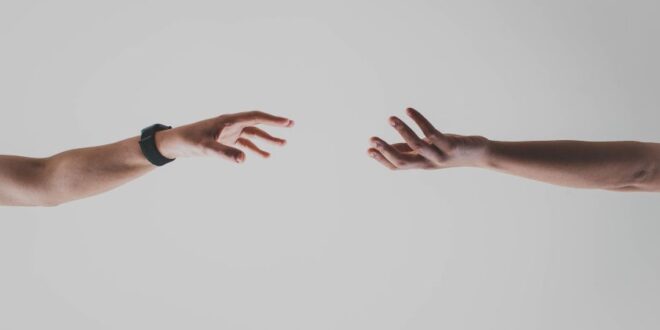The question “How much does a human arm weigh?” brings up many interesting topics on the human anatomy.
The upper limbs are instrumental to our daily lives, and you need to understand how they operate to facilitate the movement of objects, eating, and other activities.
The human arm has a series of complex muscles and bones that make up its weight and coordinate to perform everything.
What parts are these, and how much do they weigh? Let us look deeper into the topic and answer all your questions;
How Much Does A Human Arm Weigh?
A human hand weighs about 5.3% of a person’s total body weight, so a person who weighs 90 pounds will have a hand of about 4.8 pounds.
This is an estimate; the exact weight depends on the person’s physical composition. Those with more upper-body workouts will have bigger arms, heavier than the rest.
Anatomical Structure of The Hand
The human arm has 24 muscles that control the wrist, fingers, forearm, and elbow. There are 19 muscles in the lower arm and only 5 in the upper arm between the elbow and shoulder.
Some muscles are near the skin, while others are deep inside the arm. Flexors are muscle groups that help bend arm parts, like closing fingers or tilting the shoulder.
Extenders are muscle groups that extend the body parts away from the body. Here is a brief breakdown of the various components that make up the human arm;
1. The Shoulder
The shoulder is primarily made up of the clavicle and the scapula. The clavicle is the collarbone on the side of the neck, and the scapula is the shoulder blade. The main muscles in the shoulder include the deltoid and rotator cuff muscles.
The deltoid muscle allows you to raise your arm while the rotator cuff stabilizes the movements. The rotator cuff muscles consist of the supraspinatus, infraspinatus, teres minor, and subscapularis, which coordinate to balance the shoulder.
The shoulder connects the arm to the rest of the body and allows for 360-degree movements in various directions.
2. The Upper Arm
The humerus is the long bone in the upper arm, running from the shoulder to the elbow. It has two main sets of muscles: biceps brachii and triceps brachii. The biceps brachii muscle is on the front part and contracts to bend the elbow.
The triceps brachii is in the back part, and it helps extend the elbow. This combined motion helps lift the body or objects and works with the hand to coordinate dexterous tasks.
3. The Elbow
The elbow is the central joint of the human forearm, and it involves three bones. It connects the humerus from the upper arm with the ulna and radius from the forearm. It forms a hinge joint that allows the elbow to bend and extend to a 180-degree angle.
It has muscles like the brachialis and brachioradialis to bend the elbow and the anconeus to extend it so the system works like a lever.
The shape of the bones and joint prevents the elbow from turning further back than 1800, where your arm would be straight.
4. The Forearm
The forearm comprises two parallel bones: the radius and the ulna. The radius is the larger, thicker, and longer bone that defines the forearm, while the ulna is smaller. The muscles in this section control the finger and wrist movements.
The flexor muscles contract and help curl the wrist and fingers while the extensor muscles extend them.
Combining these muscles and those in the hand makes them capable of rotating the wrist and moving individual fingers. The forearm connects the upper arm and the hand to facilitate flexible movement of both.
5. The Wrist and hand
The wrist comprises eight small bones called carpals, while the hand has metacarpals in the palm and phalanges in the finger. Four fingers each have three phalanges, but the thumb has two.
The forearm muscles extend into the wrist and control how it moves to allow for bending, extension, and flexing.
There are smaller muscles within the hand to make minute movements that are crucial for activities that need precision.
The wrist allows you to change your hand’s position, which is essential for most tasks. The hand lets you grasp and manipulate objects to accomplish tasks like writing, eating, cutting, etc.
What Exercises Can I Do To Strengthen My Arm
The arm muscles are crucial for many activities, and you need to work on them to give them more power.
Bodybuilders can get massive arms with insane power levels, but that is not for everyone. Regardless, here are some exercises that will help improve your arm strength;
Concentration curl
The concentration curl is one of the arm muscles’ most effective training choices. Research in the ACE study confirmed them to be the most effective exercise for biceps. The drill is so effective because of how effectively it isolates the biceps from other group muscles.
-
- Sit at the end of a flat bench with your legs open in a V shape at shoulder length. Pick up a dumbbell with one hand and lean forward slightly, but make sure the dumbbell is not too heavy.
- Rest your elbow on top of your thigh with your palm facing the center, and rest your other hand or elbow on your thigh, depending on where you feel stable.
- Engage your core muscles to keep your upper body still, then curl the weight towards your shoulder and back down. It is better to have proper form even if the weight is small; you can lift more as you progress.
- Turn your wrist slightly at the end of each curl with your palm facing your shoulder. Pause for a moment to allow yourself to feel the effort in your bicep, lower the weight, and don’t stop until you finish your set. You can do 12 to 15 reps for a start.
Cable curl
Cable curls have several variations; the most common is using a pulley machine attached to a cable handle.
Alternatively, you can use a resistance band if you tie one end to something sturdy. The drill engages one hand at a time and focuses on all muscle groups.
- Stand a few feet from the pulley machine, grab the cable handle, palm forward, and elbow near your side. Place the foot opposite your curling hand somewhat ahead of your other foot for greater balance.
- Slowly curl your arm to bring your palm towards your shoulder, and when you get to the end, hold the curl for a moment to excerpt the biceps.
- Slowly lower the handle to the original position while fighting the resistance from the cable. Repeat this for between 12 and 15 reps, then switch arms and remain keen to keep the proper form.
Barbell curl
Most trainers offer This classic bicep exercise for nearly all programs. The aim is to keep your back straight and body still for the duration of the movement. This will make the biceps do all the work, so starting with a lighter weight is best.
-
- Stand with your feet about shoulder-width apart, with your back and neck straight.
- Hold the barbell with your arms straight at your side and the palms facing forward, then hold your breath and slowly curl the barbell towards your chest. Keep your chest, torso, and lower body still so you only use your arms to lift.
- Hold the barbell at your chest briefly, then slowly lower it to the starting point.
Chinup
The chin-up is a fantastic exercise that uses your body weight to exercise the biceps. You need a sturdy bar high enough so your legs don’t touch the ground when your arms are fully extended.
- Stand below the bar and reach up to it with both arms, with the palms facing you. Grab the bar with a firm grip with the thumbs wrapped around it.
- Steady your body and cross your legs to increase stability pull your body upwards while exhaling slowly.
- Keep your elbows in front of you and focus on using your biceps to pull you up until your chin meets the bar. Pause for a moment, then slowly lower yourself to the starting position and repeat this until you complete the set.
Conclusion
You have your facts if you wonder how much a human arm weighs. Human anatomy is exciting; even organs as simple as arms have complex systems that help them function.
The arm comprises a series of muscles and bones that make it work. It is an elaborate pulley system that helps us move many things with amazing precision.
Despite its many advantages, the human hand weighs only about 6% of our body weight. The rest of the weight goes to the internal organs, lower limbs, torso, and head.
 Being Human
Being Human




